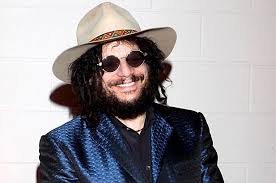Followup to my post on Renée Fleming’s American Voices festival at the Kennedy Center (which featured classical, pop, jazz, country, Broadway, and gospel singing):
Pop, jazz, and classical singers have some of the same problems. As I said in my previous post, I couldn’t attend the masterclass for classical singers, which Eric Owens taught. But Anne (Anne Midgette, my wife, who did attend, and reviewed the festival for the Washington Post) said he told the students not to pump out a big operatic sound, but instead to build meaning from the inside of the music, starting with the words.
Which is so much like what Dianne Reeves, teaching the jazz masterclass, told a singer who did little more than imitate jazz-style vocal effects, and what Ben Folds and Sara Bareilles, teaching the pop class, told someone who belted remorselessly from the start of her song to the end. So easy, in any kind of music, to sing the way you’ve heard others sing, bringing little of your own.
Bios and entrepreneurship
And then the artist bios in the program book! I’ve complained about classical bios that blindly list orchestras some leading soloist has played with, adding name after name, until the list stretches out to the crack of doom. So charming, in a perverse way, to see pop music bios doing that, as in this excerpt from a bio for Don Was, the former top-hit artist (with his group Was (Not Was)) (love the nested parentheses), top-rank producer, and for the past two years head of the top-quality jazz label, Blue Note:
…he has worked with artists including Bob Dylan, The Rolling Stones, Bonnie Raitt, Iggy Pop, Ziggy Marley, the B-52s, Elton John, Garth Brooks, Lucinda Williams, Old Crow Medicine Show, John Mayer, Ringo Starr, Willie Nelson, Brian Wilson, Kris Kristofferson, and Aaron Neville.
Eyes fall out of the head reading that! (Grudging praise for Iggy/Ziggy paired, but demerits for inconsistent capitalization: “The Rolling Stones,” but “the B-52s.”) Was’s Wikipedia entry is even worse.
About entrepreneurship: Here’s something we make such a fuss about in classical music, or at least at music schools, conservatories, which are stressing entrepreneurship — artists at least starting careers on their own, in their own way, without depending on managers and bookers to do the work for them — because the traditional kind of classical career is sagging.
But in pop and jazz they take that for granted. Don Was talked about playing bass for 15 years in Detroit clubs, Dianne Reeves (in a jazz symposium) talked about starting out singing for peanuts in a small club in Venice Beach. In the pop and jazz discussions, it was just assumed that this is how you’d start, while in classical music it’s so new that we give it a name.
And now the sadder news
Kudos to Fleming for all of this, huge props for making it happen. And to the Kennedy Center, too, since they’d invited her to do whatever project she chose, and this is what it turned out to be.
But then came the concert, with all five genres represented. I went to it with shiny optimism, expecting a glorious demonstration of genre coexistence, on a high artistic level..
But no. We plunged down toward a low common denominator. Three of the big stars, Owens, Fleming, and Sutton Foster, a big Broadway name, did exactly what singers in the masterclasses were taught not to do, pumping out one kind of unvaried sound, drowning their music in it.
The orchestral accompaniment — played by the National Symphony, under its pops conductor — was out of sync with the singers, and overstuffed, not overly tasteful. Except when Alison Kraus, representing country music, sang “A Ghost in This House,” where the orchestra sounded quite artistic, the only problem being that the arrangement didn’t sound at all country. In its original version, sung by Shenandoah in 1990, the song is pure country, one of those terrific country songs in which one strong image (see the title) opens up into a killer story, in this case about a marriage gone dead. All rendered with enough of a twang to place the couple somewhere in south or southwestern mid-America.
In Kraus’s cover version, released in 1999. there’s still a twang, though less of one. But now at the festival the song turned into high art, with no twang at all (either explicit in the singing or implied in the playing) , which means no mid-America, and, for all anyone could tell listening to what the orchestra played, no America at all.
Which made me think that country maybe wasn’t so strongly represented at American Voices, because Kraus is hardly a representative country singer, being art-country right out of the box. Which then made me realize, in one sweep of sudden understanding, that the festival gave us overall an arty view of American singing, letting in (for example) indie rock but not mainstream rock. No power ballads, no metal. Someone like Steven Tyler would have seemed entirely out of place, too loud, too brash, too vulgar. Too popular!
Though top 40 was represented, in the closing number, sung by everyone, Beyoncé’s
Which then made me realize that the concert — and, in some ways, the entire festival — gave us a rather arty view of American music. There was indie rock (Folds), but no mainstream rock, no Steven Tyler no power ballads, no hiphop, no R&B. Though we did have top 40, bursting forth in the closing number, Beyoncé’s “I Was Here.” Which, for all its humanitarian resonance, thanks to its use in a 2012 UN campaign, strikes me as synthetic pop, the kind of song manufactured to wave the flag of big emotion, and thus easily unfurled for big occasions.
Like this one. So at last we did have mainstream America showing up on the American Voices stage. But not in any way I loved.

